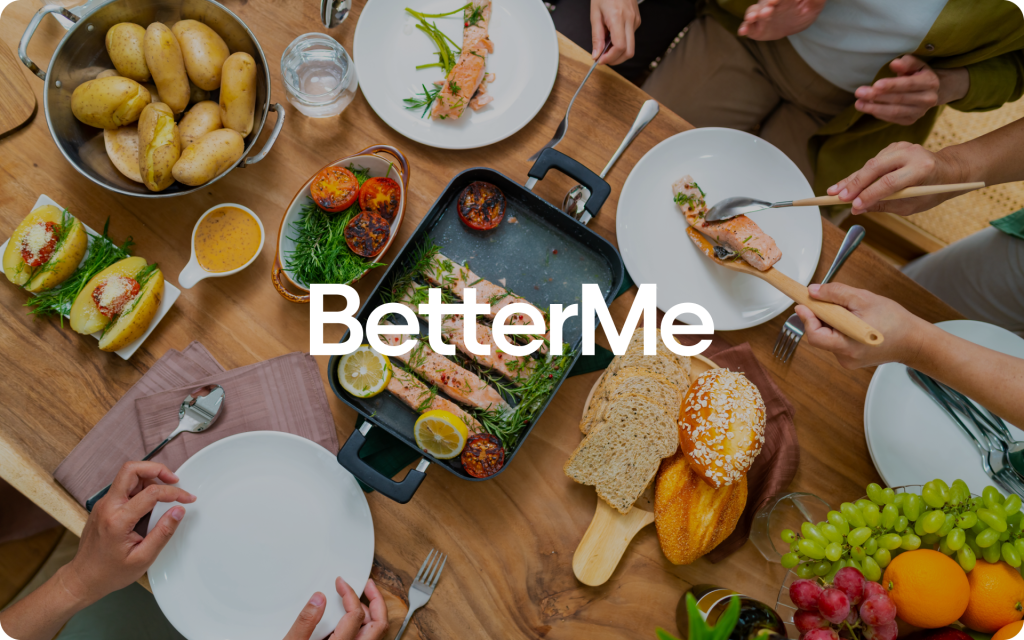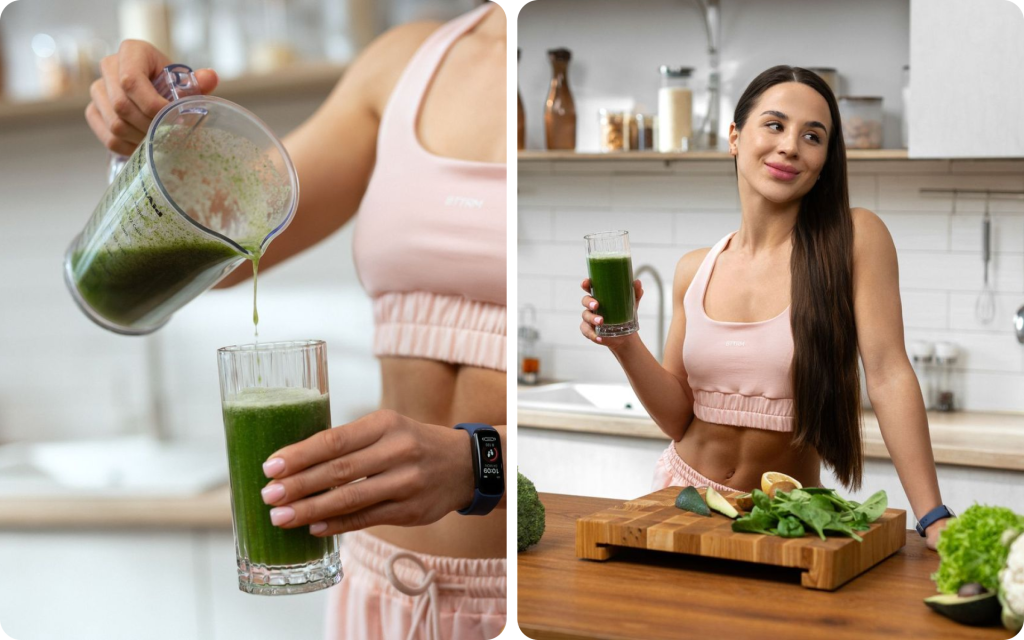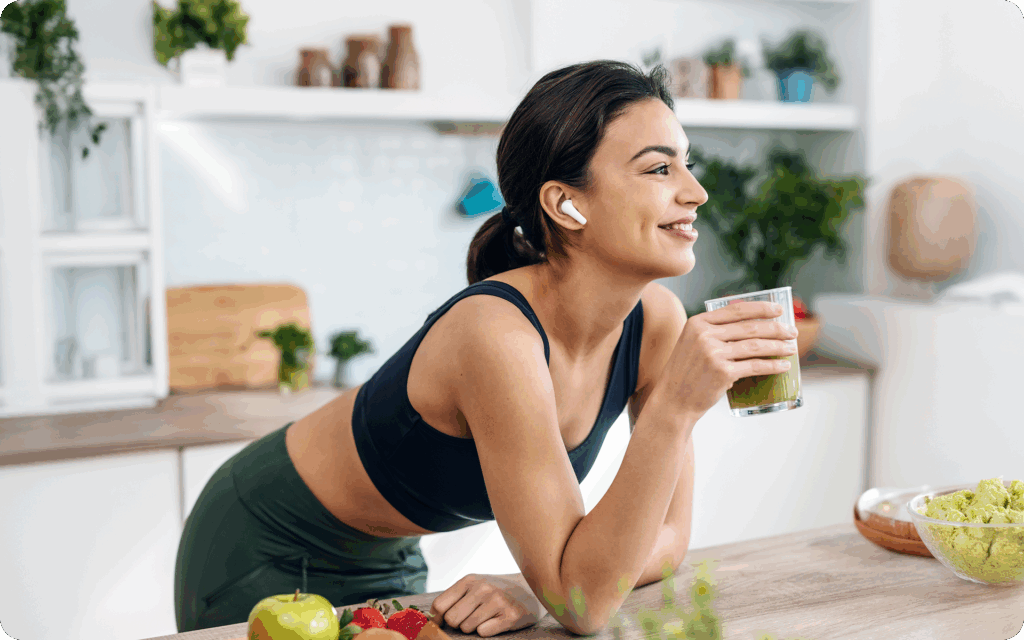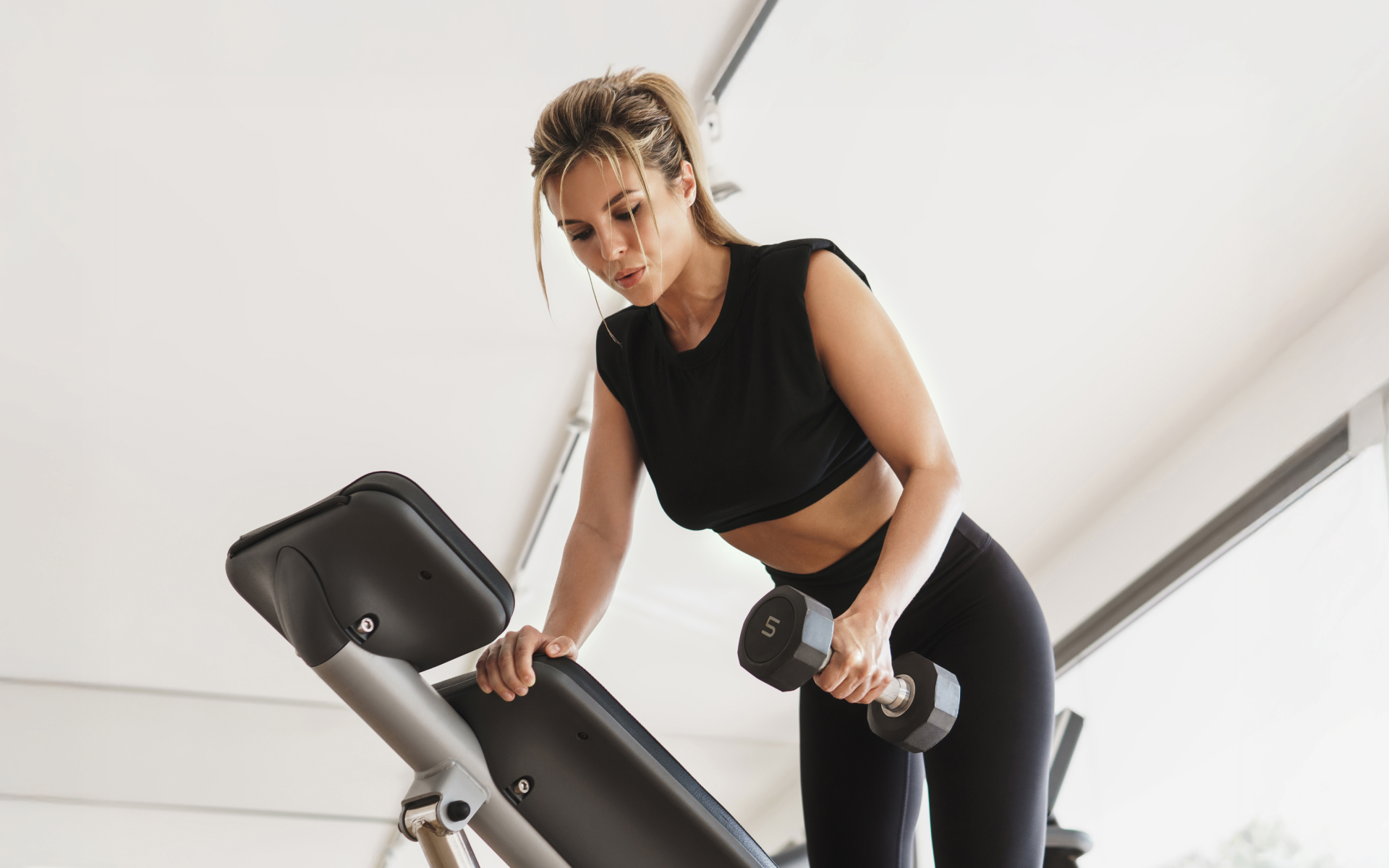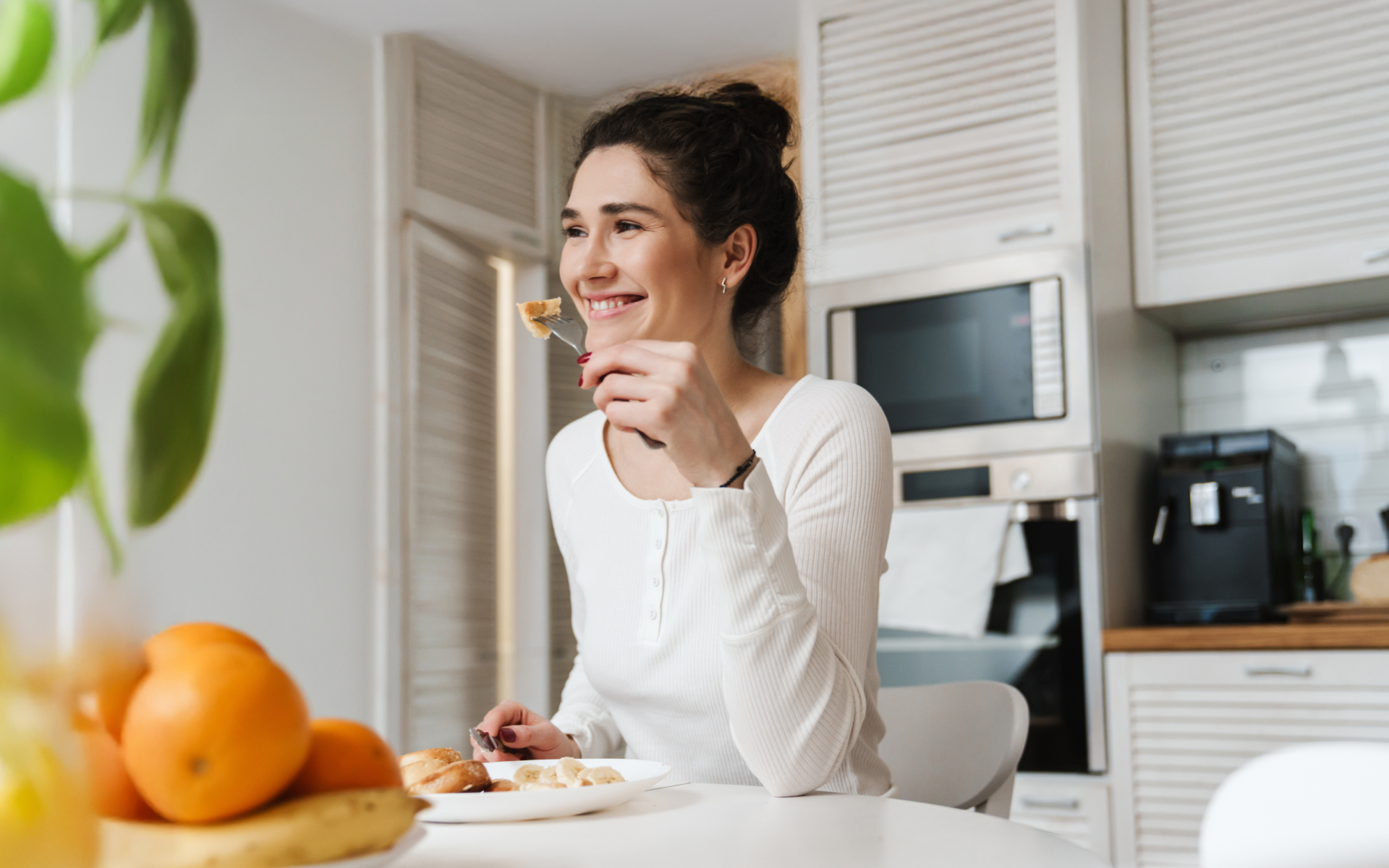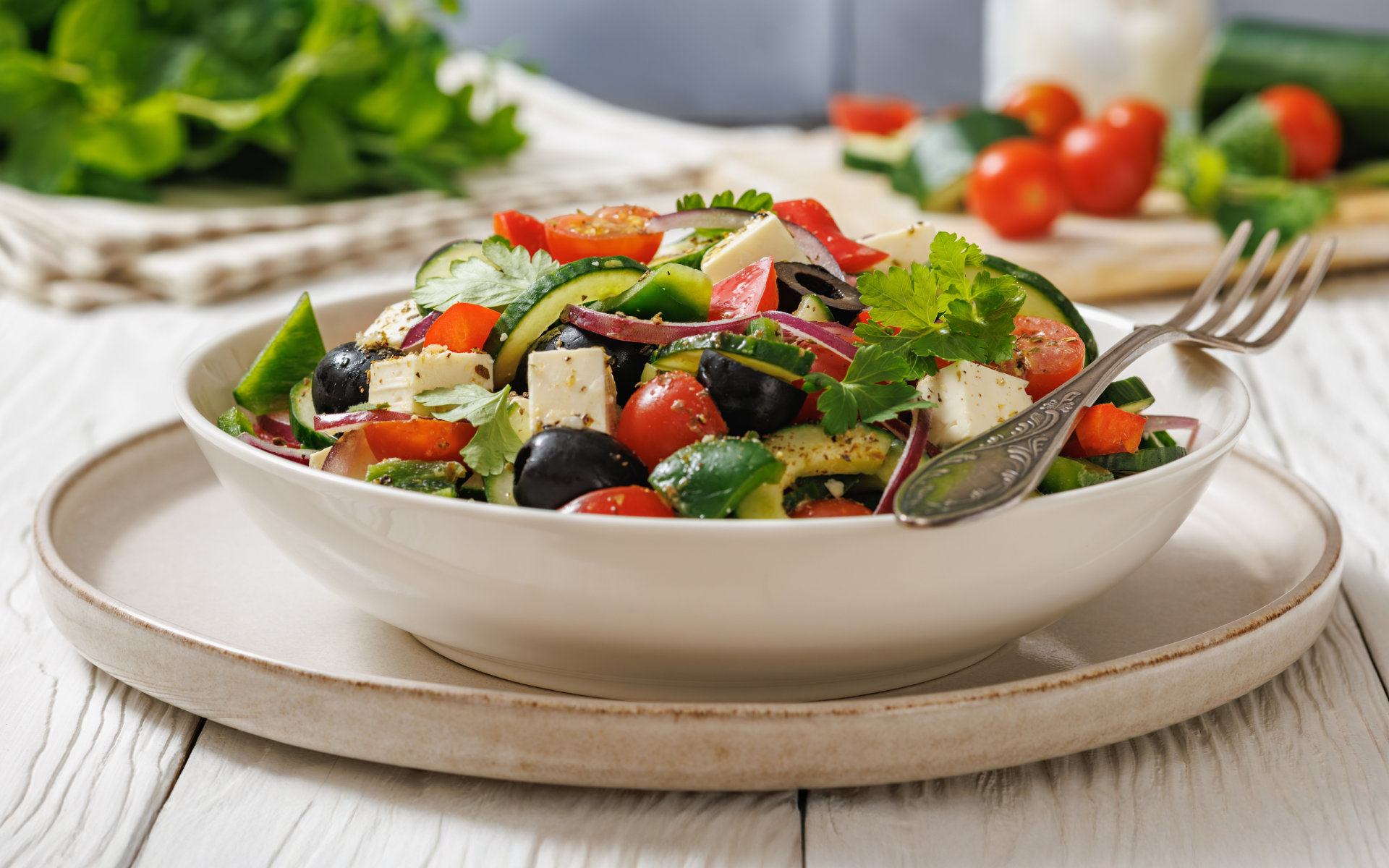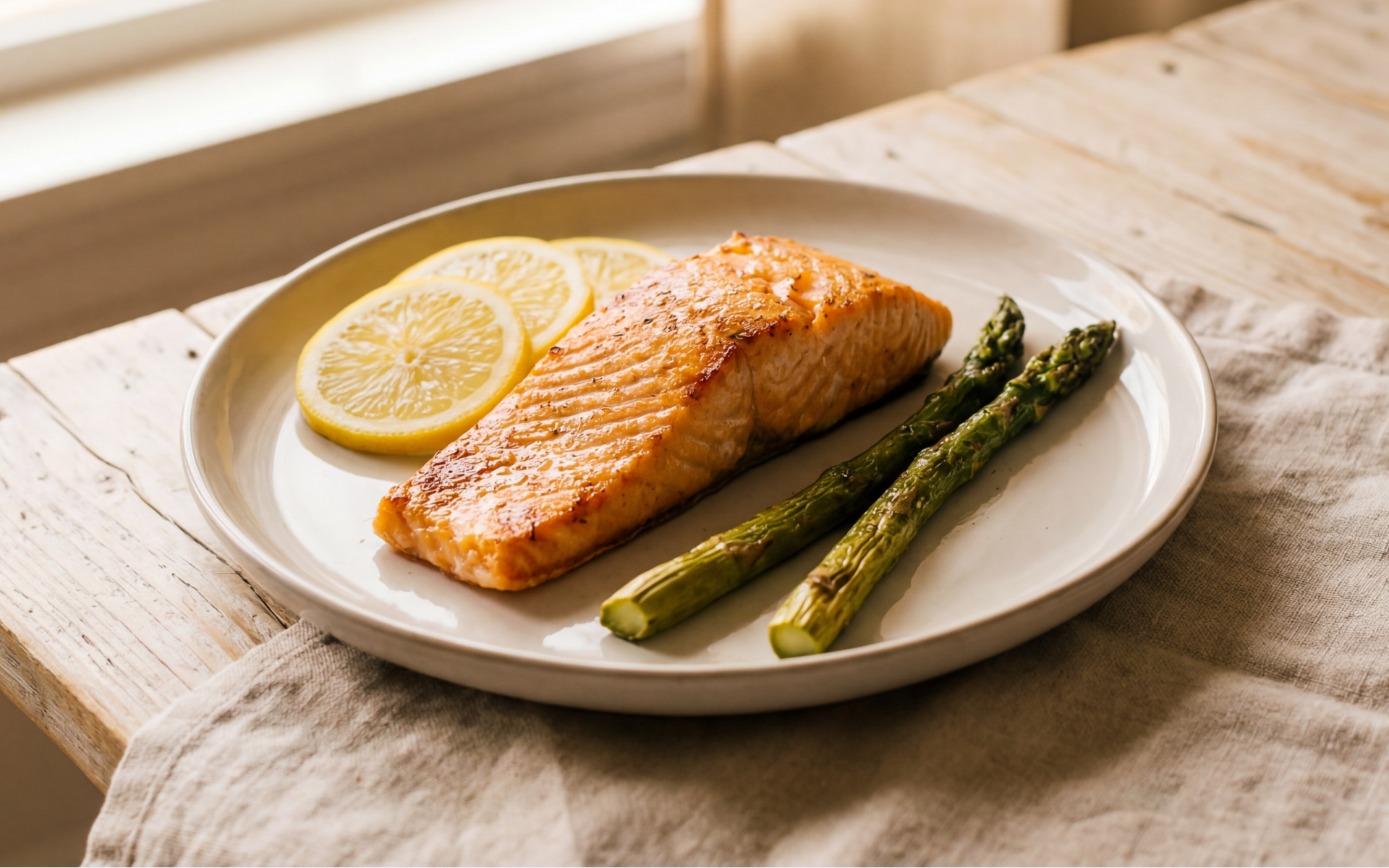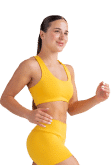It’s common to connect dieting with weight loss. But for many, the real challenge is gaining weight. Living underweight may lead to many health issues and impact your quality of life.
Some individuals have fast metabolisms and struggle to put on weight, regardless of how much they eat. Others may have recently lost weight due to a health condition or other event. Athletes may also want to bulk up with lean muscle.
No matter the reason, we can help.
A healthy diet plan for weight gain makes all the difference. You don’t want to eat a bunch of junk food to put on the pounds. It’s best to eat more nutritious foods and pair your diet with strength training.
This article will show you how a skinny person can gain weight.
It’ll also explore the healthiest foods, meals to build muscle, a 7-day weight gain diet, and even special tips for older adults and those living with chronic illness.
You’ll have an excellent blueprint for a healthy weight gain diet plan that’s practical and effective.
How Can A Skinny Person Gain Weight?
Feeling too skinny is frustrating. Others around you may eat the same meals and gain weight with ease.
The key lies in (1):
- Metabolism
- Hormones
- Daily habits
- Appetite
Step 1: Create A Calorie Surplus
To gain weight, your body needs to take in more calories than it burns.
Here’s a general guide for how many extra calories to add each day:
- For slow, steady weight gain: Add 300–500 calories per day.
- For faster results: Add 700–1,000 calories per day.
Track your progress by weighing yourself once a week.
- If you’re gaining too quickly, reduce your calorie intake slightly.
- If you’re gaining weight at a healthy pace, continue with your current plan.
- If you’re not gaining enough, try adding a few hundred more calories each day.
Always consult your doctor before starting a weight gain plan to ensure it’s safe and suitable for your health.
Step 2: Focus On Nutrient-Dense Foods
The extra calories should come from whole and nutritious foods (2):
- Carbs: Rice, quinoa, pasta, potatoes
- Protein: Eggs, chicken, dairy, fish, limited red meat
- Fats: Avocado, olive oil, nuts, seeds
- Dairy: Cheese, yogurt, milk
- Fruits and veggies
Look to eat protein at every meal. You can also try protein shakes and other high-calorie drinks in between meals.
When it comes to weight loss, progress is made by inches, not miles, so it’s much harder to track and a lot easier to give up. The BetterMe: Health Coaching app is your personal trainer, nutritionist, and support system all in one. Start using our app to stay on track and hold yourself accountable!
Step 3: Eat More Often
You may be used to eating 3 meals a day. An easy way to get extra calories in is to eat 5-6 smaller meals instead. It allows you to consume more calories without feeling too full.
If your appetite is low:
- Drink calories: smoothies, milkshakes, kombucha
- Add sauces, oils, and nut butters.
- Keep snacks handy: granola bars, trail mix, nuts, fruit with yogurt.
Step 4: Stay Active with Strength Training
Staying active is more than just cardio. Strength training ensures the weight you gain turns into muscle and not just fat.
Focus on (3):
- Working out at least 2 times per week
- Focus on multi-joint workouts like squats, push-ups, and rows.
- Aim for 6-12 exercises per workout. Do 2-3 sets each.
- Start with a weight that allows you to complete 10 reps with good form. The last two reps should feel challenging.
- Gradually increase weight over time.
Step 5: Boost Appetite Naturally
There are natural ways to increase your appetite.
You may consider:
- Use your favorite, tasty spices, sauces, and herbs to raise the flavors.
- Eat at the same time daily to train your appetite.
- Opt for calorie-dense smoothies or other drinks in addition to water with your meals.
Read more: 2-Week High-Protein Diet Menu for Belly Fat Loss
What’s The Healthiest Food To Eat To Gain Weight?
Healthy weight gain is going to come from a whole and nutritious food diet.
The meals need foods rich in calories, vitamins, and minerals.
Carbs for Energy
- Rice and quinoa are tasty, calorie-dense options.
- Grab some oats and granola for sustained fuel.
- Warm potatoes and sweet potatoes for their potassium content.
- Cook whole-grain pastas and breads for fiber.
Protein for Muscle Growth
- Eat eggs and dairy for complete proteins.
- Chicken and turkey are excellent sources of lean protein.
- Try salmon and tuna for Omega-3s.
- Plant-based protein options include lentils, beans, and chickpeas.
Healthy Fats for Extra Calories
- Add avocado to your meals for healthy fats.
- Cook with olive and avocado oils or add to your salads as a dressing.
- Carry nuts and seeds with you for a healthy snack on the go.
- Add nut butters to bread or smoothies.
High-Calorie Snacks
- Whole-wheat crackers with sliced cheese
- Peanut butter and fruit
- Smoothies with oats, whole milk, and nut butters
- Hummus and pita bread
A weight gain meal plan for females is about portion control.
You’ll also want to ensure you are eating lean proteins throughout the day for healthy weight gain.
Which Foods Grow Muscle Fast?
Muscle growth depends on the right foods, and timing is everything.
Micronutrient Benefits
Being underweight may indicate that you’re not consuming enough nutrients.
Micronutrients are small but essential. They come from the foods you eat and help your body work properly (4):
- Iron: Found in beef and beans. Helps boost energy.
- Calcium: Found in dairy. Supports strong bones.
- B-vitamins: Found in whole grains. Help your body function.
- Omega-3s: Found in fish. Help reduce inflammation.
Best Foods for Muscle Growth
- Chicken and lean beef: Protein and iron
- Seafood: Protein and omega-3s
- Eggs: Healthy fats and amino acids
- Dairy: Casein protein promotes muscle growth (5)
- Plant-Based Proteins: Lentils, tofu, quinoa
Pre- and Post-Workout Meals
- Before training: Oatmeal with banana or toast with peanut butter
- After training: Vanilla protein shake with milk and fruit
- Before bed: Cottage cheese or yogurt with fruit and nuts
The Role of Recovery
Muscles grow when you rest. That’s why getting at least 7-9 hours of sleep at night is crucial. Spacing your protein intake throughout the day also supports recovery.
Carbs are just as important as protein. They work to:
- Refill glycogen stores
- Fuel workouts
- Prevent fatigue
Rice and pasta are staples in any healthy diet plan to gain weight. Adding a protein to your carbs at meals ensures you don’t miss out on either benefit to max your results.
What Is A Healthy Diet Plan For Weight Gain?
A healthy diet plan for weight gain is balanced. It contains the right amount of carbs, protein, fats, and calories. If you’re new to the process, this diet plan for weight gain for beginners provides simple steps to add calories and nutrients gradually.
Adjust the below 3300-calorie meal plan according to your metabolism and activity level for best results.
Example 3,300 Calorie Meal Plan (Day 1)
Breakfast
- 4 scrambled eggs with cheddar cheese
- 2 slices of whole-grain toast with smashed avocado
- Peanut butter and banana oat smoothie
Snack
- Trail mix with nuts and dried fruits
- Greek yogurt with honey
Lunch
- Grilled chicken breast with 2 cups of rice
- Steamed broccoli with olive oil
- Glass of milk
Snack
- Protein shake with almond butter and milk
- Apple with peanut butter
Dinner
- Baked teriyaki salmon
- Roasted red potatoes with olive oil
- Spinach salad with avocado and yogurt dressing
Evening Snack
- Cottage cheese with pineapple
- 1 scoop of ice cream
- Walnuts or almonds
Vegetarian Swaps
- Try tofu or beans instead of meat
- Drink plant-based protein shakes
- Sub beans for chicken in rice bowls
This meal plan for weight gain is simple. You can also adjust it to fit your taste buds easily. Including high-calorie recipes for weight gain in your weekly menu keeps meals exciting and delicious.
7-Day Weight Gain Diet Plan
Here’s a detailed 7-day weight gain diet with snacks and drinks to get you started (6).
Day 1
- Breakfast: Omelet with cheese, oatmeal with milk, and a banana
- Snack: Chocolate smoothie with peanut butter and oats
- Lunch: Chicken with rice, veggies, and an orange
- Snack: Yogurt with granola and nuts
- Dinner: Grilled shrimp, quinoa, sweet potatoes, and spinach
- Snack: Wheat bread with peanut butter
Day 2
- Breakfast: Bran muffin, cereal with milk, and grapefruit
- Snack: Cottage cheese and pineapple
- Lunch: Tuna sandwich on wheat toast and a cup of tomato soup
- Snack: Hummus and carrots
- Dinner: Baked breaded fish filet with a baked potato and green beans
- Snack: Meat stick
Day 3
- Breakfast: Whole-grain pancakes with 2 Tablespoons of Maple Syrup and turkey sausage links
- Snack: Carrot sticks and guacamole
- Lunch: Turkey burger with cheese and side salad with dressing
- Snack: Protein bar
- Dinner: 6 oz sirloin steak with mushrooms and onions, a side of baked sweet potato, and milk
- Snack: Pretzels with a piece of dark chocolate
Day 4
- Breakfast: Oatmeal with milk, raisins, nuts, and fruit
- Snack: Dried fruit and nuts
- Lunch: Bowl of chili with whole grain crackers, sour cream, and cheese
- Snack: Sliced avocado
- Dinner: Chef salad with ham, turkey, cheddar cheese, eggs, olives, croutons, and ranch dressing
- Snack: Pita chips and hummus
Day 5
- Breakfast: Scrambled eggs cooked in olive oil with veggies, ham, and avocado
- Snack: Fruit and yogurt
- Lunch: Deli sandwich with whole grain bread, turkey, cheese, and mustard. Peaches and carrots on the side.
- Snack: Peanut butter and crackers
- Dinner: Corn tortilla tacos with lean ground beef, salsa, and cheese. Mexican rice on the side.
- Snack: Strawberries and low-sugar whipped cream
Day 6
- Breakfast: Bagel with cream cheese, avocado, or peanut butter
- Snack: Celery sticks with ranch dressing
- Lunch: Chicken Caesar wrap with parmesan cheese and dressing
- Snack: Boiled eggs
- Dinner: Spaghetti with meat sauce
- Snack: Pretzels filled with peanut butter
Day 7
- Breakfast: Waffles with flaxseed added to the batter, with butter and syrup
- Snack: Milkshake
- Lunch: Chicken salad on a croissant with carrots
- Snack: Veggie straws
- Dinner: Chicken quesadilla with chicken, guacamole, and refried beans
- Snack: Pudding
Read more: Superfood Diet for Weight Loss and Healthy Living
Healthy Weight Gain For Older Adults
Weight gain is trickier with age. It’s still possible and vital for health and strength.
Aim to (7):
- Eat protein-rich foods to slow muscle loss.
- Drink high-calorie shakes for an easy calorie boost.
- Pick soft and easy-to-chew foods if needed.
- Eat small and frequent meals with a low appetite.
Remember, understanding what a healthy diet plan for weight gain is, is the first step toward reaching your goals safely.
The BetterMe: Health Coaching app will provide you with a host of fat-frying fitness routines that’ll scare the extra pounds away and turn your body into a masterpiece! Get your life moving in the right direction with BetterMe!
Healthy Weight Gain For Females
A well-structured weight gain meal plan for females takes into account hormonal differences and energy needs to support healthy muscle growth (11).
Some women are naturally thinner than others, but certain health conditions can also cause it.
Gaining weight too fast can lead to:
- Disordered eating
- Heart problems
- High cholesterol
Discuss an eating plan with your doctor to help you gain weight healthily.
Healthy Weight Gain For People Living With Chronic Conditions
First, consult with your doctor or a dietician to gain weight safely.
Being underweight and living with a chronic condition may increase your health risks, such as:
- Malnutrition
- Low bone density
- Fatigue and weakness
- Impaired healing
Here are some common chronic illnesses and how to adjust your diet to maximize your results:
Diabetes
- Choose low-glycemic carbs like quinoa and beans.
- Pair your carbs with a protein or fat to prevent blood sugar spikes.
- Add healthy fats, such as nuts, olive oil, and avocado.
Heart Disease Or Heart Failure
- Limit sodium intake.
- Choose lean proteins, such as fish and chicken.
- Use healthy oils instead of butter, like olive oil.
- Avoid processed and salty foods.
Digestive Issues (Crohn’s, IBS, Celiac)
- Eat easy-to-digest carbs like rice, oatmeal, and bananas.
- Drink your calories with shakes and smoothies (8).
- Avoid trigger foods that worsen symptoms.
What Are Other Tips For Fats And Healthy Weight Gain?
Food is key. But lifestyle matters, too.
- Lift weights: You ensure that the extra calories build muscle, not just fat.
- Get good sleep: Aim for 7-9 hours of sleep nightly. The muscles recover when you rest.
- Track calories: Tracker apps help prevent under-eating.
- Form habits: Stay consistent. Weight gain can take weeks or months.
Supplements
- Protein powder in drinks and foods for a kicker.
- Creatine helps build muscle strength.
- Fish oils protect your heart health.
High-Calorie Food Recipes
Here are some tasty high-calorie recipes for weight gain:
- Whole Wheat Toast with Avocado, Scrambled Eggs, and Radish
- Oatmeal with Peanut Butter and Banana
- Avocado and Chickpea Salad
- Creamy Peanut Butter Smoothie
- Classic American Breakfast
- Loaded Egg Sandwich
These high-calorie recipes for weight gain are affordable and straightforward.
Typically, all fruits are healthy food choices. Bananas, mangoes, dates, and avocados are perfect. Bananas are a quick carb, with avocados giving you healthy fats. Dates and mangoes pack natural sugars. Adding any of these to your smoothie or breakfast oatmeal boosts calories in a healthy weight gain diet plan. Trail mix is a nutrient-dense snack that often contains 400-500 calories per cup (9). Peanut butter on toast adds around 300 calories (10). Cheese and crackers or protein shakes made with milk and nut butters are also ideal for a diet plan for weight gain for beginners. Yes! Peanut butter is nutritious and calorie-dense. Just a couple of spoonfuls provide around 200 calories filled with healthy fats and protein. Add it to smoothies, spread it on bread, or dip it alone for a great snack. That’s why most meal plans for weight gain include it. Of course. Bananas contain lots of potassium and carbs. Alone, they provide quick energy. But they’re even better paired with nut butters and yogurt. It’s the perfect calorie-dense snack for a 7-day weight gain diet or a 3300-calorie meal plan. Frequently Asked Questions
Which fruit is best for weight gain?
What snack has the most calories?
Can I eat peanut butter to gain weight?
Is banana good for weight gain?
The Bottom Line
In this article, we break down precisely what a healthy diet plan for weight gain looks like and how you can implement it. A healthy diet plan to gain weight means eating more of the right foods. Choose a balanced diet with protein, carbs, and fats instead of just junk. Pair that with strength training, plenty of food, sleep, and consistency, and you’ll build weight safely and healthily.
Whether you’re following a weight gain meal plan for females, a diet plan for weight gain for beginners, or a 7-day weight gain diet, remember: progress takes time.
Stay consistent, enjoy what you eat, and celebrate the small wins along the way.
DISCLAIMER:
This article is intended for general informational purposes only and does not serve to address individual circumstances. It is not a substitute for professional advice or help and should not be relied on for making any kind of decision-making. Any action taken as a direct or indirect result of the information in this article is entirely at your own risk and is your sole responsibility.
BetterMe, its content staff, and its medical advisors accept no responsibility for inaccuracies, errors, misstatements, inconsistencies, or omissions and specifically disclaim any liability, loss or risk, personal, professional or otherwise, which may be incurred as a consequence, directly or indirectly, of the use and/or application of any content.
You should always seek the advice of your physician or other qualified health provider with any questions you may have regarding a medical condition or your specific situation. Never disregard professional medical advice or delay seeking it because of BetterMe content. If you suspect or think you may have a medical emergency, call your doctor.
SOURCES:
- Appetite Control: Hormone or Diet Strategies? (2020, pubmed.ncbi.nlm.nih.gov)
- Healthy Ways to Gain Weight (2024, nhs.uk)
- Resistance Training by the Numbers (2021, health.harvard.edu)
- Priority Micronutrient Density of Foods for Complementary Feeding of Young Children (6-23 Months) in South and Southeast Asia (2021, frontiersin.org)
- 4 Benefits of Casein (2023, health.clevelandclinic.org)
- Sample Daily Menu (2025, sportsnutrition.msu.edu)
- The Changing Nutritional Needs of Older Adults and How to Meet Them (2024, heart.org)
- Struggling to Gain Weight with Stomach Issues? Here Are My Top 5 Tips (and a Smoothie for Weight Gain) (2022, nutritionresolution.com)
- Trail Mix (2025, eatthismuch.com)
- Sourdough Toast w/Peanut Butter (2025, eatthismuch.com)
- Underweight (2021, womenshealth.gov)







